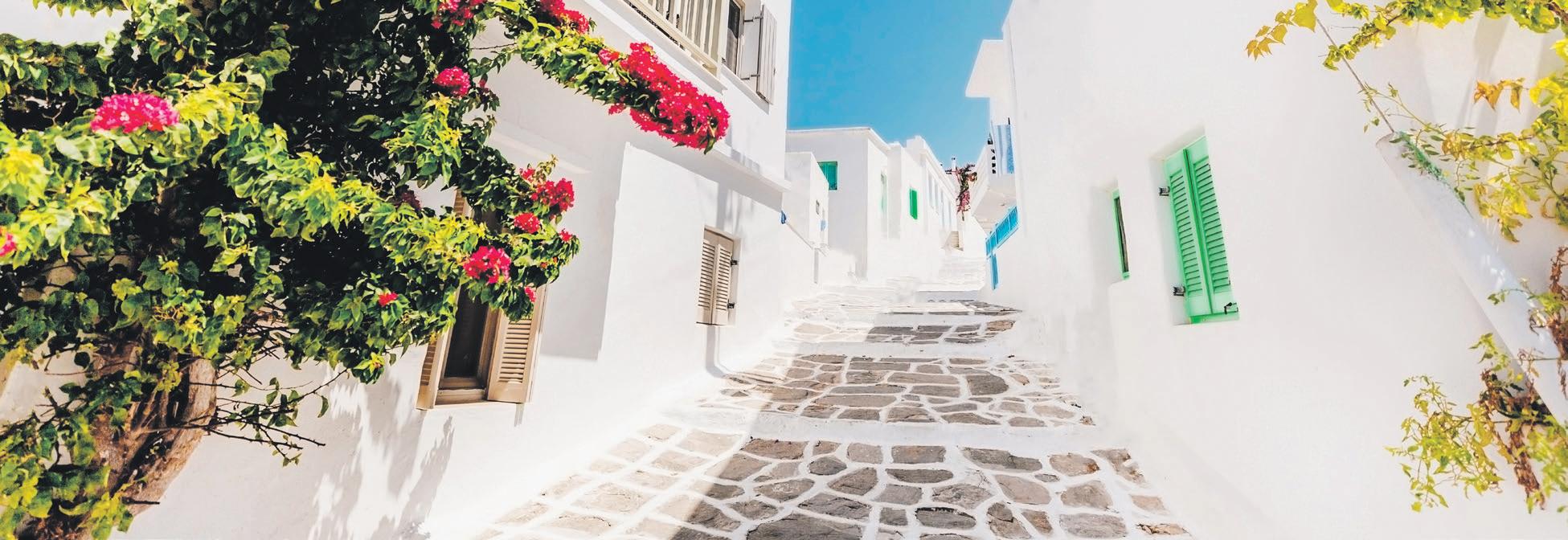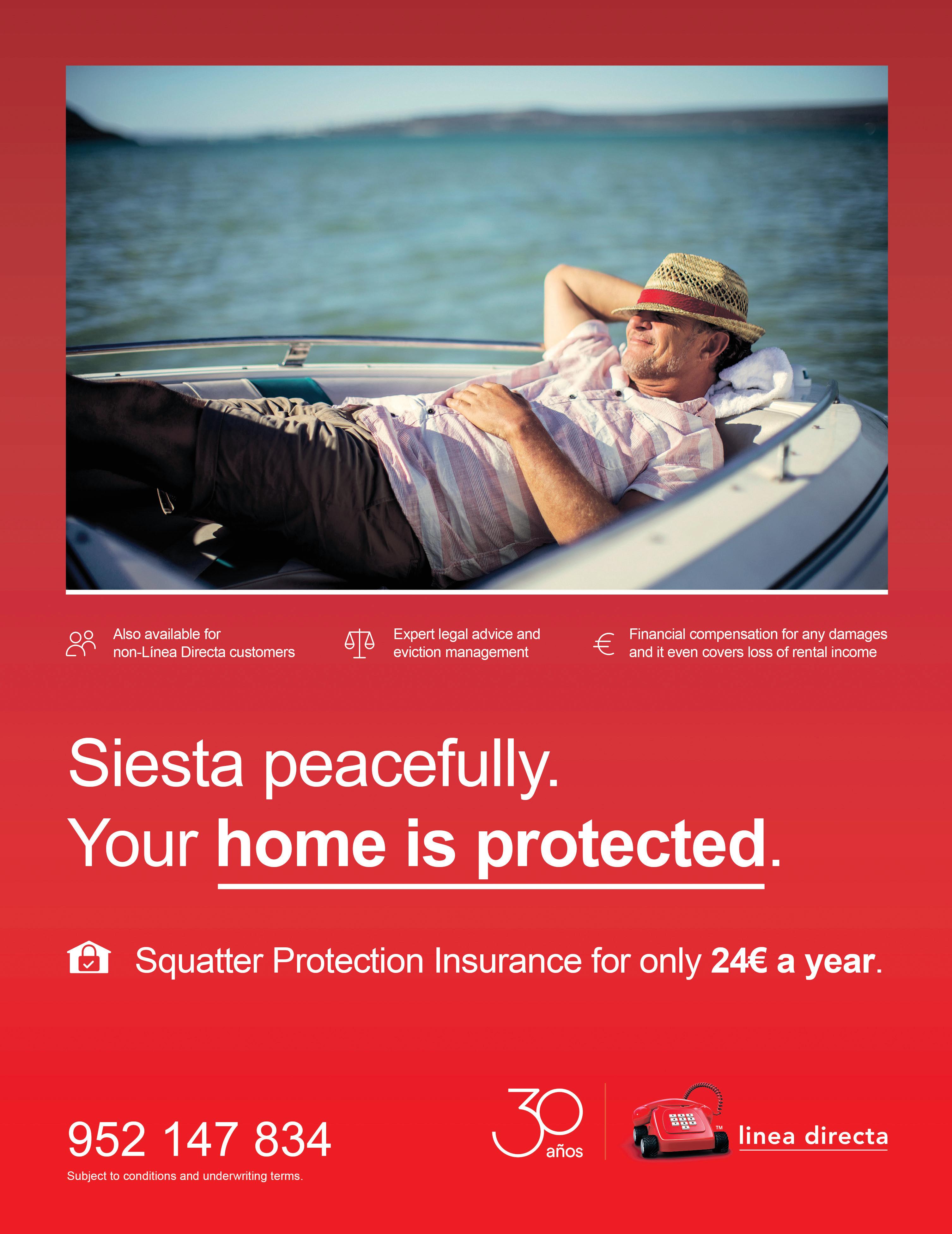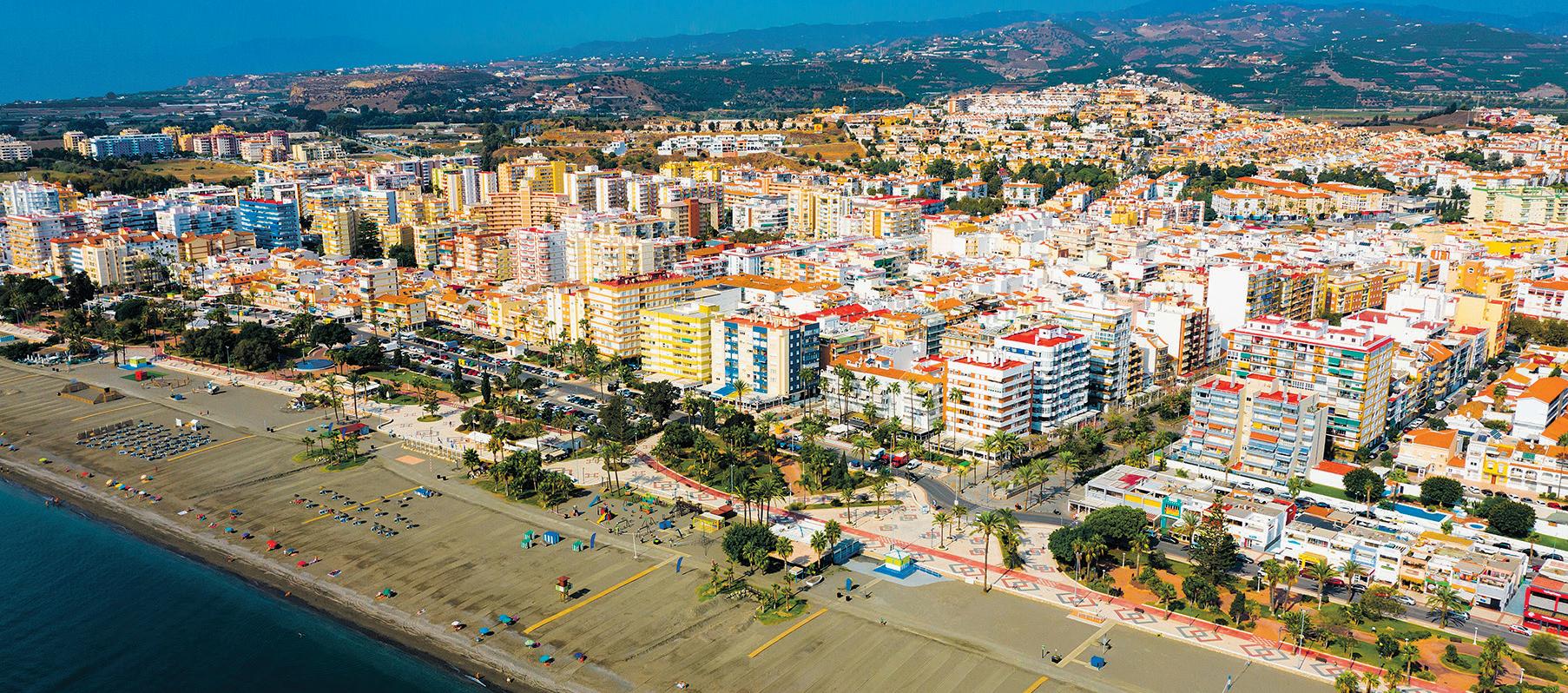

Sun, scenery, and soaring demand
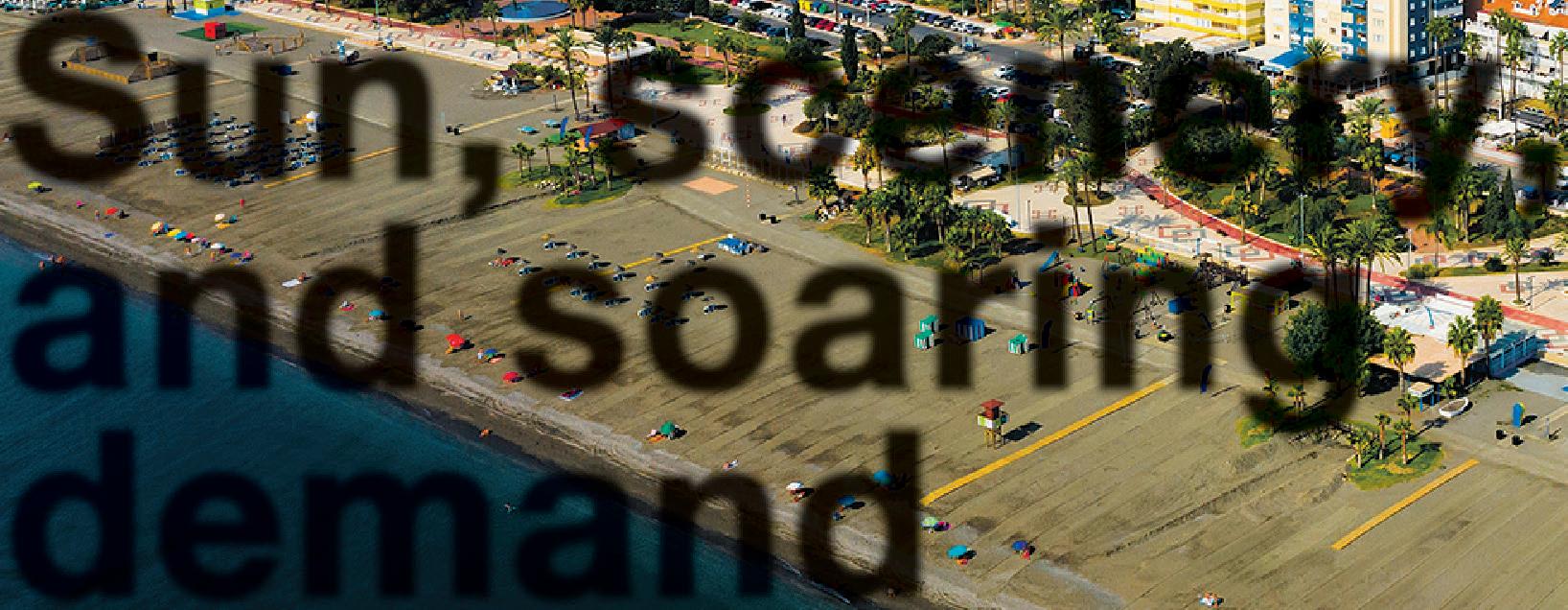
THE Axarquia continues to prove itself as one of Europe’s top destinations for second-home buyers. According to Sonneil research, nearly 10,300 homes in Malaga Province were bought by foreign nationals in 2024 - making up 29 per cent of all sales. These were largely second-home purchases, not relocations for work.
Sonneil CEO Alfredo Millá said: “The international market remains healthy,”
with 80 per cent of these sales focused on resale properties. That preference, combined with limited new-build stock, is keeping prices strong - especially in hotspots like Torre del Mar and Nerja.
But it’s not just coastal luxury that’s drawing attention. Inland areas are gaining ground among buyers seeking tranquillity, nature, and traditional Andalucian charm at more accessible prices. With proximity to both
Solar power and sea breezes
ALONG Spain’s sunny coastline, more homeowners are adopting green energy solutions that work with the natural environment. With abundant clear days and rising energy costs, solar panels are becoming increasingly popular, particularly in coastal areas where sun exposure is reliable.
Thanks to Spain’s long hours of sunshine, coastal homes are ideal for solar installations. New builds often come with panels pre-installed, while older homes can usually be adapted. Battery storage is improving, allowing
energy to be used in the evening or on cloudy days.
However, coastal living brings salty air, storms, and strong winds, particularly in exposed or clifftop properties. Panels must be installed using corrosion-resistant materials and strong mounting systems, with regular maintenance to ensure longterm performance. Some properties also benefit from small wind turbines, though these are more effective in rural or less built-up areas.
An energy efficiency certificate (Certificado de Eficiencia
Malaga City and the coast, they offer a slower pace without sacrificing connectivity.
Rising demand is also fuelling the holiday rental market. According to Grupo Tecnitasa, coastal rents in Malaga Province jumped by more than 12 per cent ahead of summer 2025. Along the coast, weekly rents can now reach €3,700 for prime flats. As Spanish Property Choice’s John Blanca put it, “Everything is
on the up. These are exciting times.” With Malaga earning a ‘new Silicon Valley’ reputation and remote work enabling lifestyle-driven relocation, the region appeals to a broadening pool of buyers. Whether it’s the appeal of Nerja, the buzz of Malaga City or the peaceful authenticity of inland white villages, southern Spain continues to deliver on investment, lifestyle, and longterm value.

energy. Coastal homes often need improved insulation and glazing to cope with hot summers and damp winters.
cient appliances, shading systems, and water-saving fittings - can significantly reduce bills. Some homes use greywater for
many councils offer grants or tax breaks for renewable upgrades. Green energy is no longer just a trend—it’s becoming standard.
Spain’s tiny home solution
ACROSS Spain, a quiet housing shift is underway - not through skyscrapers or large developments, but via modest, mobile, and energyefficient dwellings known as tiny homes. These compact spaces, or mini casas, are becoming an appealing solution to rising living costs, environmental concerns, and changing lifestyles.
Spain’s housing market, especially in cities like Madrid, Barcelona, and Valencia, has tightened significantly over the past decade. With soaring rents and property prices, many - particularly younger people - are struggling to find affordable housing.
Tiny homes, typically between 15 and 40 square metres, present a more affordable option. Their smaller size means lower construction costs, reduced utility bills, and a simplified lifestyle. Prices range from €15,000 for basic movable models to €70,000 for larger, fully equipped ones. Stationary homes with foundations and modern amenities generally fall between €40,000 and €70,000 - far below average property prices in many areas.

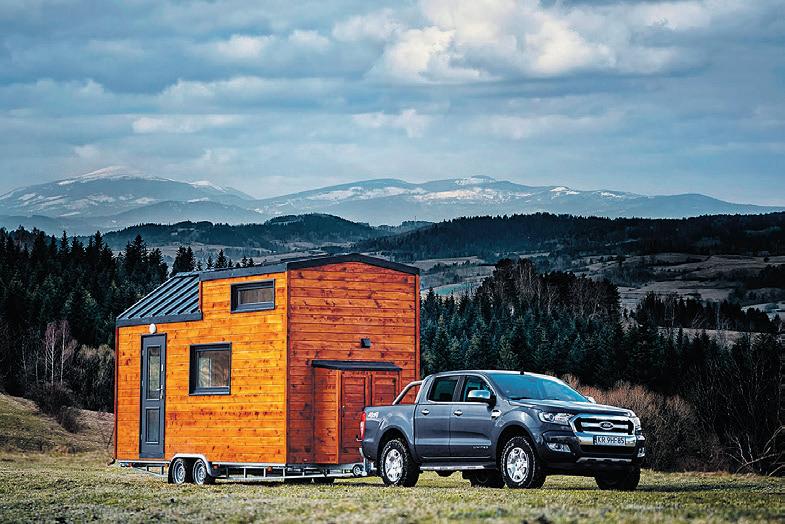
Flexibility is another draw. Some tiny homes are designed for mobility, allowing owners to relocate easily. Others are fixed but offer modern comforts in a compact space. Interest is growing not only in urban areas but also in rural regions such as Teruel, Soria, and Lugoareas facing depopulation. Some local councils now support tiny home projects through incentives or simplified permit processes, aiming to boost sustainable living and rural revitalisation. Along the

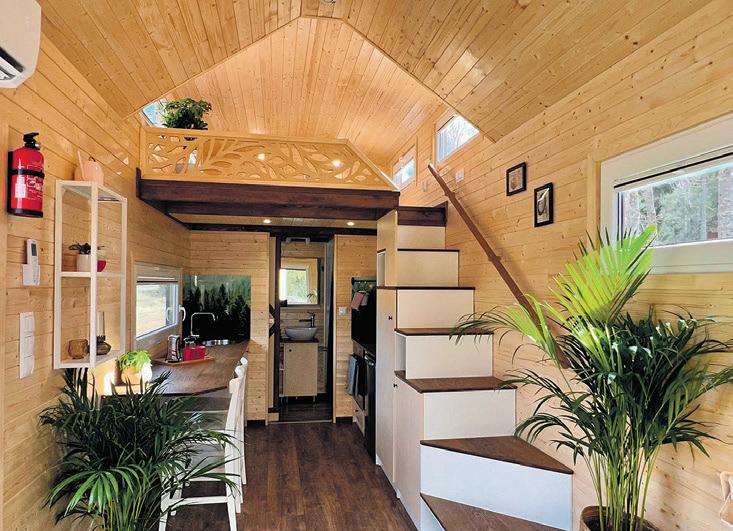
coasts of Andalucia and Catalonia, tiny homes have gained popularity among remote workers, artists, and entrepreneurs who value access to urban services alongside low-impact living. Residents near Tarifa, Cadiz, cite low maintenance, home-grown food, and reduced energy costs as major benefits.
Legal and financial barriers remain. Movable tiny homes are classified like caravans and usually do not require building permits, though they must follow local land-







POLAR AIR
use rules. Fixed homes need full legal approval, including building permits and compliance with Spain’s building code. They must also be built on urban-designated land. Financing options are limited, particularly for movable homes, but some banks are beginning to offer loans for legally approved stationary ones. Despite these challenges, the tiny home movement continues to grow, offering a sustainable, flexible, and more affordable alternative to traditional housing.
ADVERTISING FEATURE

CONDITIONING
POLAR Air Conditioning offers a dependable and personable service, supplying high-quality products at competitive prices.
Air Conditioning from Malaga to Axarquia · Costa del Sol Serving the area from Malaga to Axarquia, their certified AC and refrigeration technicians carry out repairs, servicing, supply, and installation of all manufacturers’ equipment. All work is guaranteed, and new air conditioning units come with up to a 10-year warranty.
Polar Air provides energy-efficient inverter technology air-conditioning systems from Malaga to Axarquia, suitable for both cooling and heating. These systems can reduce running costs to as low as four cents per hour for both homes and businesses. They’re F-Gas qualified and able to work on all air-conditioning units.
They ensure quality work at fair prices, covering all makes and models at the best rates, with service extending throughout Malaga and the Axarquia area.
For further information call 0034 655 211 192. www.polarairconditioningmalaga.com
Photo credits: Pinterest/Planet Deco
Some tiny homes are designed for mobility.
THE homes along the Costas are a perfect example of how colour can bring life and warmth to interiors. Inspired by the stunning Mediterranean landscape, many homeowners choose colour palettes that reflect the sea, sky, and surrounding nature. If you want your home to feel bright, welcoming, and connected to the coast, this is a simple way to achieve that.
One of the most popular choices is using blues in various shades. From deep navy to soft sky blue, these tones mimic the nearby sea and clear skies. Blue is known to create a calming effect, making it ideal for living rooms, bedrooms, or even kitchens. Pairing blue with white walls is a classic combo that instantly brightens a room and gives it a fresh, airy feel.
Terracotta and warm, earthy colours are also a big hit in Mediterranean interiors. These tones are inspired by the region’s natural clay soil and traditional roof tiles. Using terracotta in tiles,
work well in dining areas or kitchens where a cheerful atmosphere is welcome.

pots, or accent walls adds warmth and a rustic feel to the home. It’s a great way to introduce texture and keep

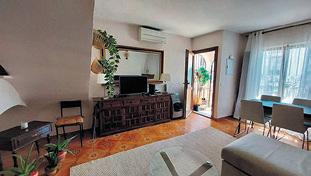
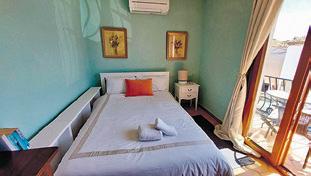

Interiors
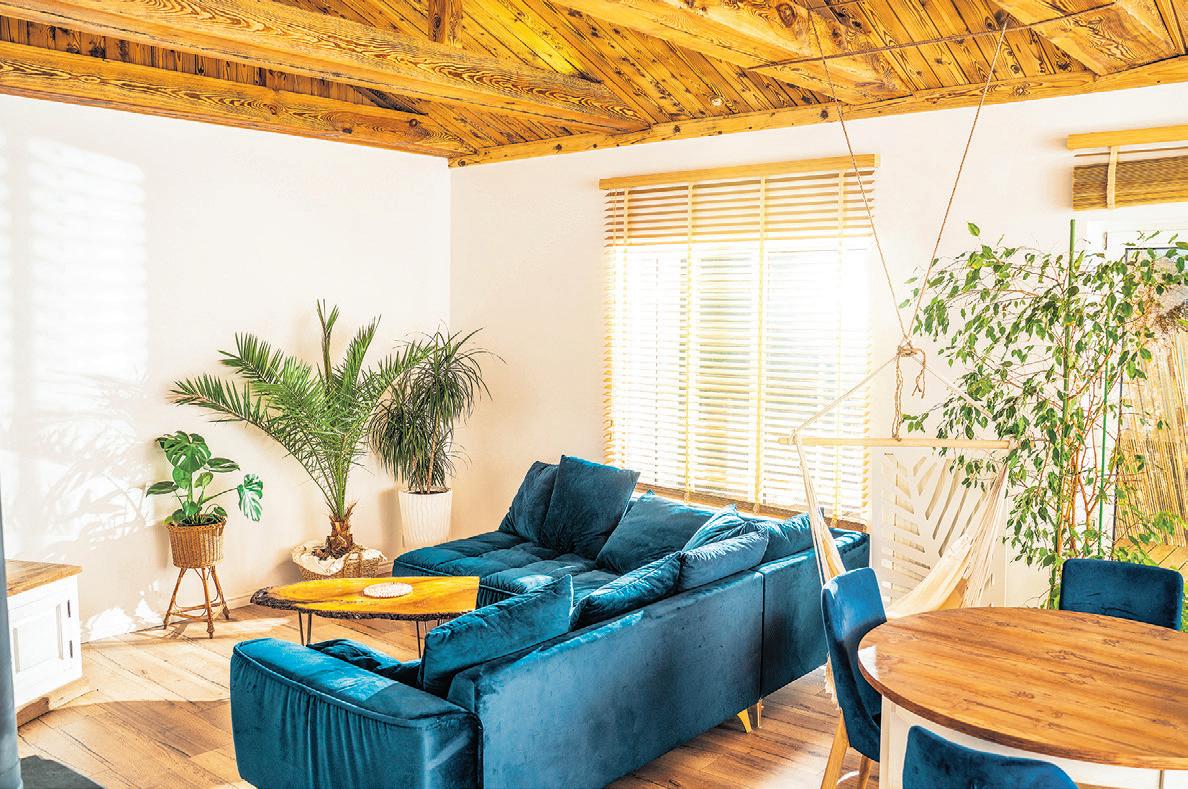
the space feeling cosy.
Yellow and sunny tones are another way to bring the Mediterranean indoors. Soft
yellows or golden shades echo the bright sunshine and orange blossoms, the coast is famous for. These colours
Green is a subtle but important colour in this region’s interiors, often used to represent the lush gardens, olive trees, and countryside nearby. Olive green cushions, plants, or decorative pieces add a natural touch without overwhelming the space.
To balance these bold colours, many homes keep larger pieces like sofas or cabinets in neutral shades such as beige, cream, or light grey. This lets the Mediterranean colours stand out without making the room too busy.
If you’re decorating or renovating a home on the Costas, think about bringing in these Mediterranean colours. They don’t just look beautiful, they help create a connection between your indoor space and the stunning surroundings outside. Simple touches like painted walls, cushions, or ceramics in these hues can completely change the feel of your home.
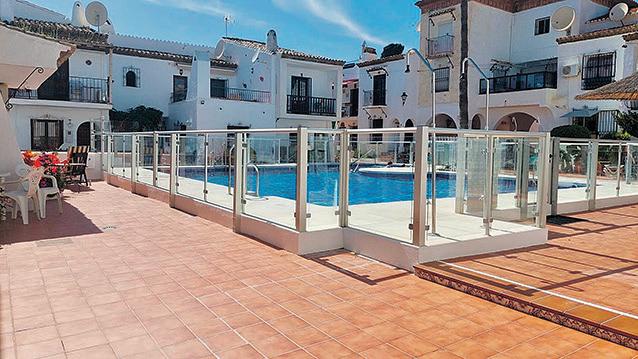






Image: Shutterstock/ NeonShot
Mediterranean colours bring warmth.
Tradition meets modern
IN many parts of Spain, especially along the coast, new homes are being built alongside traditional ones. As a result, more homeowners are blending old and new interior styles to create spaces that feel both comfortable and full of character.
This trend works well whether moving into a modern apartment or restoring an older village house. Rather than choosing between rustic charm or sleek modern design, many are now mixing both. When done well, it adds

depth and interest to a home.
A common approach is to retain traditional features such as wooden ceiling beams, terracotta tiles or wrought iron railings, and pair them with simple modern furniture in neutral tones. This contrast creates a relaxed, stylish feel that avoids looking too dated or too stark.
In newer homes, rustic details like wooden dining tables, handmade pottery or textured fabrics can soften clean lines and smooth finishes, making spaces feel more personal.
Kitchens and bathrooms often showcase this style, with modern layouts complemented by stone worktops, vintage-style sinks or patterned tiles. Lighting also plays a key role, with traditional lanterns or pendants paired with recessed fixtures to highlight both styles. The mix is also practical. Older homes gain efficiency and storage, while new builds benefit from added warmth and charm. Whether in a villa or a village house, this blend offers the best of both worlds.

An expensive mistake
IT’S a common habit in homes across Spainfrying food, then tipping the leftover oil down the sink. But this everyday gesture is not only illegal under Law 7/2022, it could cost you up to €100,000. While cooking oil isn’t classified as hazardous, improper disposal is treated as a serious environmental offence.
Fines start at €2,001 and can reach €100,000, depending on quantity, repeat offences, or environmental damage. Beyond the legal risk, used oil causes major harm. As it cools, it solidifies, sticking to pipes and sewers. These clogs, which cost European cities an estimated €90 million a year to clear, can paralyse drainage systems.
Environmentally, it’s worse. Just one litre of oil can contaminate 1,000 litres of water. According to the Aquae Foundation, it also suffocates aquatic life by preventing oxygen from dissolving into water.
Spain generates around 350 million litres of used cooking oil annually - about 10 litres per person. While the hospitality sector recycles 72 per cent, only 5 per cent of household oil is collected.
The solution is simple: cool the oil, store it in a sealed plastic bottle, and take it to a local recycling point. In Madrid, more than 450 petrol stations accept used oil and may even offer discounts in return.
Living
with salt and sand
BUYING a home by the Spanish coast means enjoying beautiful sea views and fresh ocean air. But it also means dealing with salt, sand, and humid conditions that can affect your property over time.
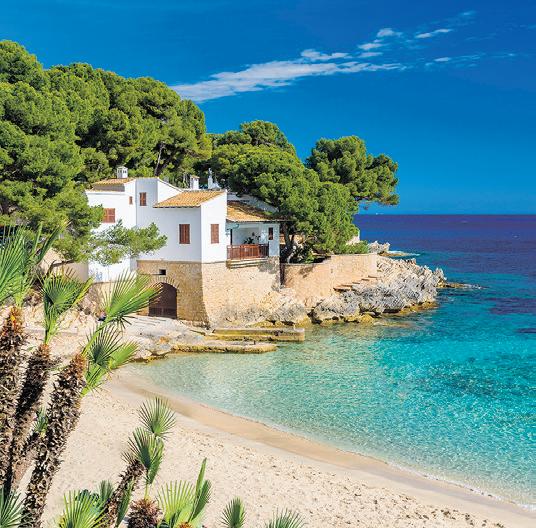
Salt in the air is one of the biggest challenges for coastal homes. Salt can cause metal parts, like door handles, railings, and window frames, to rust faster. It can also wear down paint and make wood surfaces age more quickly. Regular maintenance is important to keep these things in good shape.
Sand can get into small spaces like door tracks, windows, and even inside appliances. It may seem like a small problem, but over time, sand buildup can cause damage or make things harder to use.
Humidity near the coast can lead to dampness inside the home. This can cause problems like mould or mildew if the property isn’t well ventilated. It’s a good idea to check that windows and doors seal properly and to use a dehumidifier if needed.
When buying a coastal property, it helps to look for materials designed to withstand these conditions. For example, aluminium or PVC windows resist rust better than iron. Tiles and stone floors are easier to clean than carpets that trap sand.
Living near the sea is wonderful, but it comes with its own care requirements. With some regular upkeep and the right choices, your coastal home can stay beautiful for years to come.
Old charm, new comfort.
Image: Shutterstock/ Simon Dannhauer
ADVERTISING FEATURE
EVERYTHING YOU NEED FOR YOUR HOME IN NERJA
AT Dimitri Villa, located on Calle Granada, on the corner with Calla Ánimas (Nerja), we offer a comprehensive range of services designed for property owners, tenants and visitors seeking peace of mind and reliable support.
We specialise in property sales and rentals, always providing a personalised service and transparent management. Although, we go much further: we offer a full maintenance service including cleaning, laundry, repairs, minor and major renovations as well as property inspections while you are away, ensuring your home stays in perfect condition all year around.
We also provide a taxi service, ideal for airport transfers or local transport and we arrange home and car insurance tailored to your needs. For international clients or property owners from abroad, we offer professional translation services in
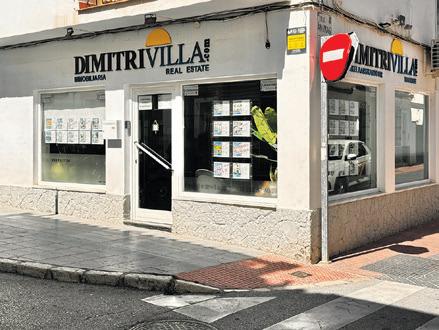

German, English, French, Dutch and Spanish making communication and formalities easier and more efficient.
With years of experience and indepth knowledge of the area, Dimitri Villa is committed to providing a professional, reliable and friendly service. Our goal is to offer practical, efficient solutions so you don’t have to worry about anything.
Visit us or get in touch and discover how we can help. At Dimitri Villa, we take care of your property as if it were our own.
Tel: (+34) 952 524 027 • M: (+34) 653 897 734 • dimitri@dimitrivilla.com
C/Granada, corner with C/Ánimas 30, Nerja


Digital nomad destination
SPAIN’S coast is no longer just for tourists and retirees - it’s fast becoming a hub for digital nomads seeking remote work in the sun. With fast internet, a relaxed lifestyle and an increasing number of co-working cafés, it offers a work-life balance that’s hard to match.
Fibre-optic internet is now widely available, even in smaller towns and villages. Whether staying in a coastal apartment or a bungalow inland, most places provide the speeds needed for video calls, cloud storage and other online work.
Across the country, co-working spaces and laptop-friendly cafés have emerged to meet growing demand, offering reliable Wi-Fi, good coffee and welcoming environments. Many also host events to help remote workers connect and build community.
It’s not only the coast attracting interest. Rural and inland areas are also drawing digital nomads, helped by government schemes offering rent subsidies, tax breaks and grants to revitalise small towns. Disused public buildings, including old schools, have been converted into co-working hubs, offering quiet, affordable alternatives to busier areas.
Spain’s digital nomad visa, launched in 2023, allows non-EU workers to stay for up to five years, with reduced income tax in the first year.
With warm winters, walkable towns and a slower pace of life, Spain makes remote work genuinely enjoyable.



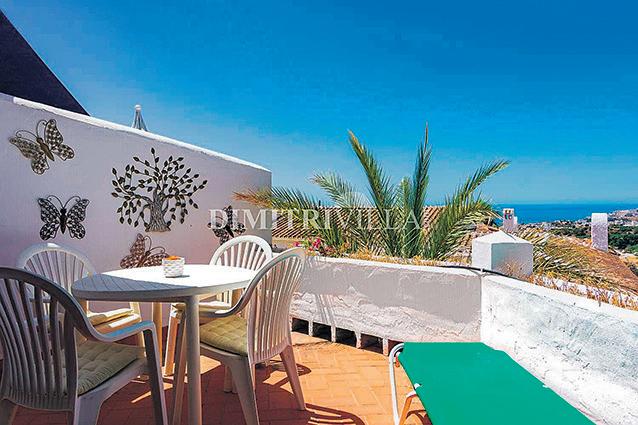

Is your property in a protected area?
IF you’re thinking about buying a home on the Spanish coast, it’s important to know whether the property is in a protected area. Spain has specific rules about what can and can’t be built near the sea, and understanding them now can save you a lot of trouble later.
One of the most important laws is called the Ley de Costas (Coastal Law). It protects the public’s right to enjoy the coast and stops people from building too close to the water. In general, there is a 100-metre protection zone from the shoreline where building new properties or extending existing ones can be restricted. In some older urban areas, this limit is reduced to 20 metres.
This means some homes built before the law came in may be grandfathered in, but still not allowed to make major changes. It’s also possible to find homes that technically sit on public land but were given a temporary right to stay, known as a concession. These can expire, so it’s important to check the paperwork.
Another thing to consider is whether the area is part of a natural park or conservation zone. These places have even stricter rules to protect the environment and limit overdevelopment. Zoning laws might also stop you from using a property for tourist rentals or opening a business.
Before buying, ask your estate agent or lawyer to check if the land is affected by the Coastal Law or any other restrictions. It’s a simple step that could prevent legal headaches in the future.

Fresh Summer
AS temperatures rise across Spain and the rest of Europe, many of us are looking for simple ways to keep our homes cool and comfortable. Thankfully, you don’t need a full renovation to give your space a fresh, summerready feel. Here are some easy decorating ideas to help refresh your home for summer 2025. One of the quickest ways to give your home a summer update is to swap out dark colours for lighter ones. Think whites, soft blues, pale greens, or sandy beige. You can change cushion covers, bed linen, and even curtains to help your space feel
brighter and cooler.
Natural materials like cotton, linen, wicker, and wood help create a light and airy feel. Linen curtains or a cotton throw on the sofa can make a big difference. Try woven baskets for storage or a bamboo rug to add a touch of summer style without breaking the bank.
Plants not only look great, but they can also help purify the air and cool down your home. Choose lowmaintenance options like aloe vera, snake plants, or peace lilies. Place them near windows or in empty corners to bring in a bit of nature.
Heavy lampshades and
Pet-friendly interiors
IN Spain, where tiled floors and sunny balconies are the norm, making your home pet-friendly can be easier than you think, especially if you live in a ground-floor flat or countryside home with outdoor space.
Along the Axarquia, it’s common for pets to spend time both indoors and out. That means choosing materials that can handle sand, fur, and muddy pawprints. Porcelain tiles or hydraulic cement tiles are popular in older Spanish homes, and they’re ideal for pets, tough, cool underfoot, and easy to clean.
For sofas and cushions, go for durable, tightly woven fabrics like canvas or outdoor upholstery. They can handle daily use and won’t trap fur as easily. In rustic areas like many inland towns, washable throws are a smart addition, great for covering furniture after a long walk through the hills.
If you’ve got a terrace or patio, think about adding shade and non-slip surfaces so your dog can enjoy the outdoors safely. Low-maintenance Mediterranean plants like lavender or rosemary are pet-safe and bring a nice touch of local style.
Built-in storage near entrances can also make life easier, keeping leads, towels, and treats organised, especially if you’re heading out daily for beach or campo walks.
With a few thoughtful choices, it’s easy to create a stylish, pet-friendly interior that suits Spanish living. After all, here in Spain, pets aren’t just animals, they’re part of the family.

warm-toned bulbs can make a room feel stuffy. Switch to cooler white bulbs and consider using light, fabric shades. In the evenings, string lights or solar-powered garden lights can add a soft, cosy glow.
You don’t need to buy anything new to refresh your space, just move things around. Make sure sofas or furniture aren’t blocking windows or fans.
Let the air circulate freely by keeping things simple and uncluttered.
Summer is the perfect time to put away heavy decor items like thick rugs, dark cushions, or extra throws. The less clutter, the more open and breezy your home will feel. Store away winter decorations and enjoy a more relaxed, simple style.
If you have a balcony or small patio, add a few
touches like colourful cushions, a small table, or even an outdoor rug. It’s an easy way to create a summer retreat at home.
Final Tip: Refreshing your home for summer doesn’t need to cost much or take a lot of effort. A few small changes in colour, fabric, and layout can go a long way toward making your space feel cooler, lighter, and more inviting.
Image: Shutterstock/ Marques
Avoid costly legal surprises.
Declutter for summer.

A guide to buying land to build your dream home in Spain
MORE and more expats in Spain are ditching the search for a ready-made home and opting to build from the ground up. Whether it’s the appeal of designing every detail yourself or simply a way to get better value for money, buying land and building your own property offers a unique opportunity.
But it’s not without its complications. If you’re thinking about going down this route, it pays to understand the key steps and potential pitfalls before you break ground.
Choosing the right plot
Spain categorises land primarily into two types: rústico and urbano. Rústico land is typically rural and often lacks essential infrastructure, making it unsuitable for residential construction. Conversely, urbano land is designated for development and usually has access to utilities like water, electricity, and sewage systems. However, even urbano plots may require additional investments to ensure full habitability.
Before purchasing, you’ll want to obtain a nota simple from the Land Registry to check for any existing debts or
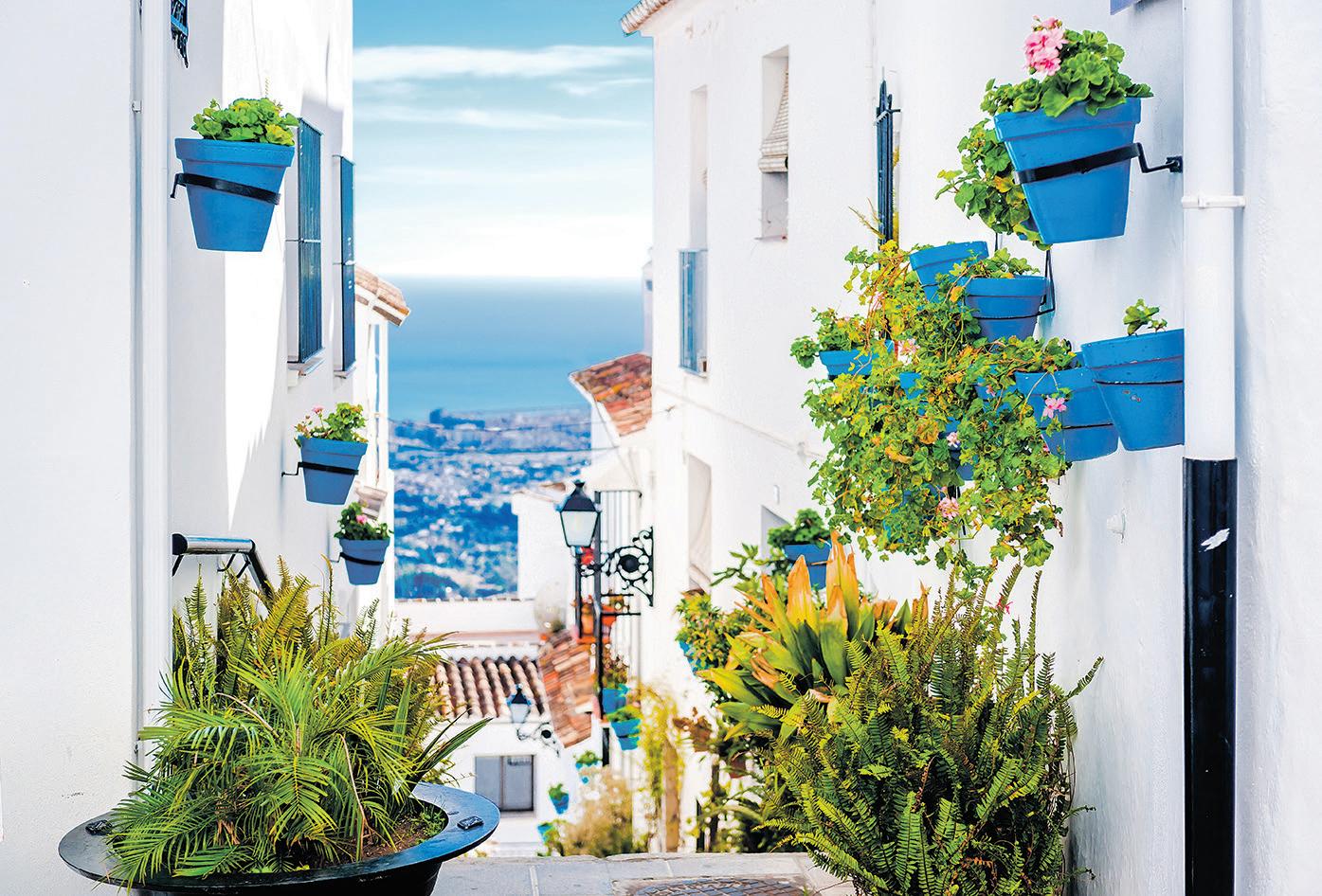
legal issues associated with the land. Additionally, consulting the local Plan General de Ordenación Urbana and obtaining a certificado urbanístico will provide insights into zoning regulations, building restrictions, and permissible land use.
Understanding the timeline
Building a home in Spain is a marathon, not a sprint. The design phase can span several months, followed by a four to six week period to prepare the building licence application. Approval for this licence may take additional months or even years, depending on the municipality. Once construction commences,
expect a timeline of up to two years before completion.
Financial planning and currency considerations
Financing a self-build project involves more than just the cost of land and construction. Additional expenses include surveys, legal fees, permits, and utility connections. It’s essential to create a comprehensive budget that accounts for these variables.
Those expatriates wishing to transfer funds to Spain to finance the project will also need to consider how fluctuating exchange rates can significantly impact their overall costs.
Unfavourable exchange rate movements can lead to unexpected expenses. While transfer fees can also eat into your budget.
With Currencies Direct you’ll benefit from competitive exchange rates, no transfer fees and a range of transfer options to help your money go further.
Learn more about Currencies Direct by contacting your local branch. Alternatively, pop into one of our branches and speak to our multilingual experts.
